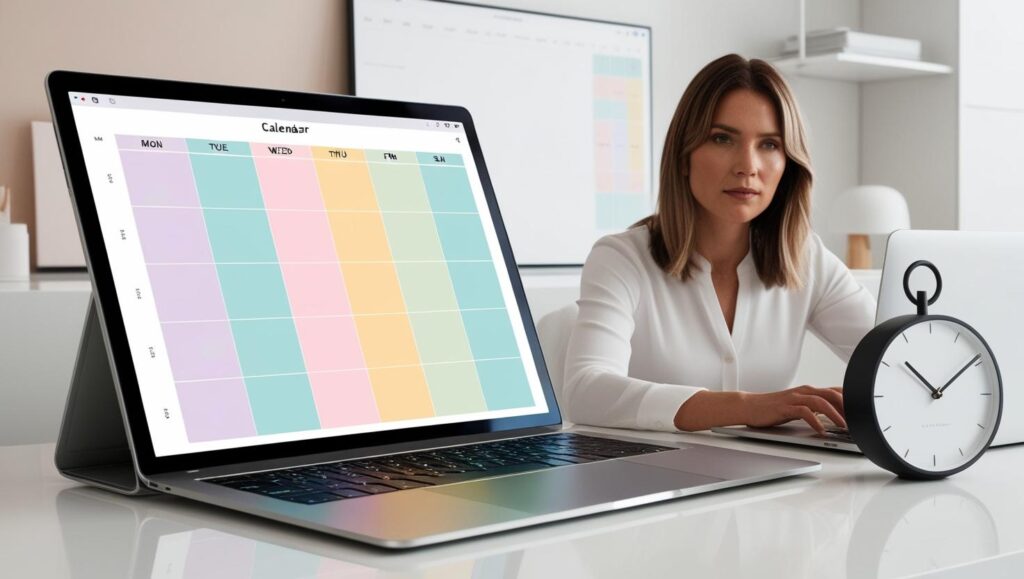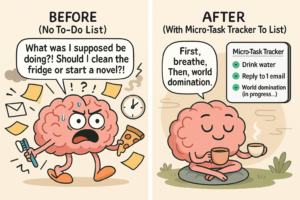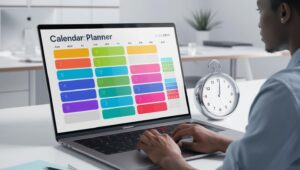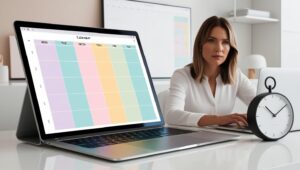Workplace Anxiety: 10 Tools to Stay Calm and Focuse at Work

Workplace Anxiety: 10 Tools to Stay Calm and Focused at Work
 Deadlines looming, meetings piling up, and that one email you still haven’t answered—workplace anxiety can turn your desk into a stress hotspot. Whether it’s a racing heart before a presentation or overwhelm from a packed schedule, anxiety at work is real and can sap your focus and energy. But you don’t have to let it run the show. These 10 practical tools—from fidget toys to time-blocking—will help you reduce anxiety at work, relieve stress at work, and stay calm and focused, even on the toughest days.
Deadlines looming, meetings piling up, and that one email you still haven’t answered—workplace anxiety can turn your desk into a stress hotspot. Whether it’s a racing heart before a presentation or overwhelm from a packed schedule, anxiety at work is real and can sap your focus and energy. But you don’t have to let it run the show. These 10 practical tools—from fidget toys to time-blocking—will help you reduce anxiety at work, relieve stress at work, and stay calm and focused, even on the toughest days.Feeling buried under work tasks? Install the free Micro-Task Tracker Chrome extension or Firefox Add-On to organize your priorities and keep stress in check.
Why Workplace Anxiety Hits Hard
 Workplace anxiety often stems from high expectations, tight deadlines, and the pressure to perform. According to a 2021 study in Journal of Occupational Health Psychology, nearly 40% of employees report work-related stress impacting their mental health. This can manifest as physical tension, racing thoughts, or dread before meetings. The good news? You can manage workplace anxiety with tools that fit seamlessly into your workday, helping you stay productive and calm. Let’s explore 10 strategies to tackle stress and thrive at work.
Workplace anxiety often stems from high expectations, tight deadlines, and the pressure to perform. According to a 2021 study in Journal of Occupational Health Psychology, nearly 40% of employees report work-related stress impacting their mental health. This can manifest as physical tension, racing thoughts, or dread before meetings. The good news? You can manage workplace anxiety with tools that fit seamlessly into your workday, helping you stay productive and calm. Let’s explore 10 strategies to tackle stress and thrive at work.1. Desk-Friendly Stress-Relief Tools
Why It Works
 Fidget toys and stress balls provide a tactile outlet for nervous energy, reducing anxiety without disrupting your workflow. A 2020 study in Stress and Health found that tactile stimulation lowers stress responses.
Fidget toys and stress balls provide a tactile outlet for nervous energy, reducing anxiety without disrupting your workflow. A 2020 study in Stress and Health found that tactile stimulation lowers stress responses.Top Picks
-
Stress Ball: Squeeze for 30 seconds to release tension.
-
Fidget Cube: Click, spin, or roll to distract from anxious thoughts.
-
Desk Spinner: A subtle spinning toy for discreet relief.
How to Use Them
-
Keep one tool on your desk for quick access.
-
Use during meetings or while reading emails to stay calm.
Practical Tip
-
Rotate tools weekly to keep them engaging.
2. Time-Blocking to Reduce Overwhelm
Time-blocking organizes your day into focused chunks, preventing the chaos that fuels workplace anxiety. It creates structure and reduces decision fatigue.
How to Do It
-
Divide your day into 60-90 minute blocks for specific tasks (e.g., emails, project work).
-
Include 5-10 minute breaks between blocks to reset.
Practical Tip
-
Start with 2-3 blocks daily and adjust as needed.
3. Mindfulness Apps for Quick Work Breaks
Mindfulness apps deliver short, guided exercises to relieve stress at work, grounding you during hectic moments. A 2019 study in JMIR Mental Health found that mindfulness apps reduce anxiety by 20%.
Top Apps
-
Insight Timer: Free 5-minute meditations for stress relief.
-
Calm: Quick breathing exercises for desk breaks.
-
Headspace: Short “SOS” sessions for acute anxiety.
How to Use Them
-
Take 3-5 minute breaks 2-3 times daily.
Practical Tip
-
Download apps in advance for instant access during stressful moments.
4. Communication Strategies to Ease Performance Anxiety
Performance anxiety in meetings or presentations can spike workplace anxiety. Structured communication strategies build confidence and clarity.
Strategies
-
Prepare Key Points: Jot down 2-3 main ideas before speaking.
-
Use “Pause and Breathe”: Take a brief pause to breathe before responding.
-
Reframe Nerves: Tell yourself, “Excitement feels similar to anxiety—I’m ready!”
Practical Tip
-
Practice responses in low-stakes settings, like team check-ins.
5. Setting Boundaries to Prevent Burnout
Why It Works
Overcommitting at work can lead to burnout, amplifying anxiety. Clear boundaries protect your mental health and focus.
How to Set Them
-
Define Work Hours: Avoid answering emails after 6 PM.
-
Say No Politely: “I’d love to help, but my plate’s full this week.”
-
Communicate Needs: Tell your team, “I need 30 minutes of focus time daily.”
Practical Tip
6. Ergonomic Tips to Reduce Physical Tension
Why It Works
Poor posture and uncomfortable setups increase physical tension, worsening workplace anxiety. Ergonomic adjustments promote relaxation.
Key Adjustments
-
Chair Height: Ensure feet are flat on the floor, knees at 90 degrees.
-
Monitor Position: Keep the screen at eye level, 20-30 inches away.
-
Keyboard Tray: Position wrists neutrally to avoid strain.
Practical Tip
7. Deep Breathing for Instant Calm
Why It Works
Deep breathing reduces cortisol and eases physical anxiety symptoms during work stress, per a 2020 study in Frontiers in Psychology.
How to Do It
-
Inhale through your nose for 4 seconds.
-
Hold for 4 seconds.
-
Exhale through your mouth for 6 seconds.
-
Repeat 4-5 cycles.
Practical Tip
8. Gratitude Journaling for Perspective
Why It Works
Writing down positive moments shifts focus from anxiety to gratitude, boosting mood. A 2018 study in Journal of Positive Psychology found gratitude reduces stress.
How to Do It
-
Spend 2-3 minutes noting 3 things you’re grateful for (e.g., supportive colleague, good coffee).
-
Keep a small notebook or digital note on your desk.
Practical Tip
9. Hydration to Support Mental Clarity
Why It Works
Dehydration can heighten anxiety and reduce focus. Staying hydrated supports cognitive function and calm.
How to Do It
-
Drink 8-10 glasses of water daily, keeping a bottle at your desk.
-
Add lemon or cucumber for flavor to encourage sipping.
Practical Tip
10. Visual Cues for Calm
Why It Works
Visual reminders, like calming images or quotes, anchor you during stressful moments, reducing workplace anxiety.
Ideas
-
Place a small plant or nature photo on your desk.
-
Pin an inspiring quote, like “One task at a time.”
-
Use a calming desktop wallpaper.
Practical Tip
-
Update cues monthly to keep them fresh.
Conclusion: Conquer Workplace Anxiety
Workplace anxiety doesn’t have to derail your productivity or peace. With these 10 tools—fidget toys, time-blocking, mindfulness apps, and more—you can reduce anxiety at work, relieve stress at work, and stay focused no matter the challenge. Start with one or two strategies that feel doable, and build a calmer workday over time.
Ready to take control? Here’s your next step:
-
Bookmark this post for quick reference during work stress.
Which tool will you try first? Share in the comments, and pass this post to a coworker who needs a stress-free workday!








